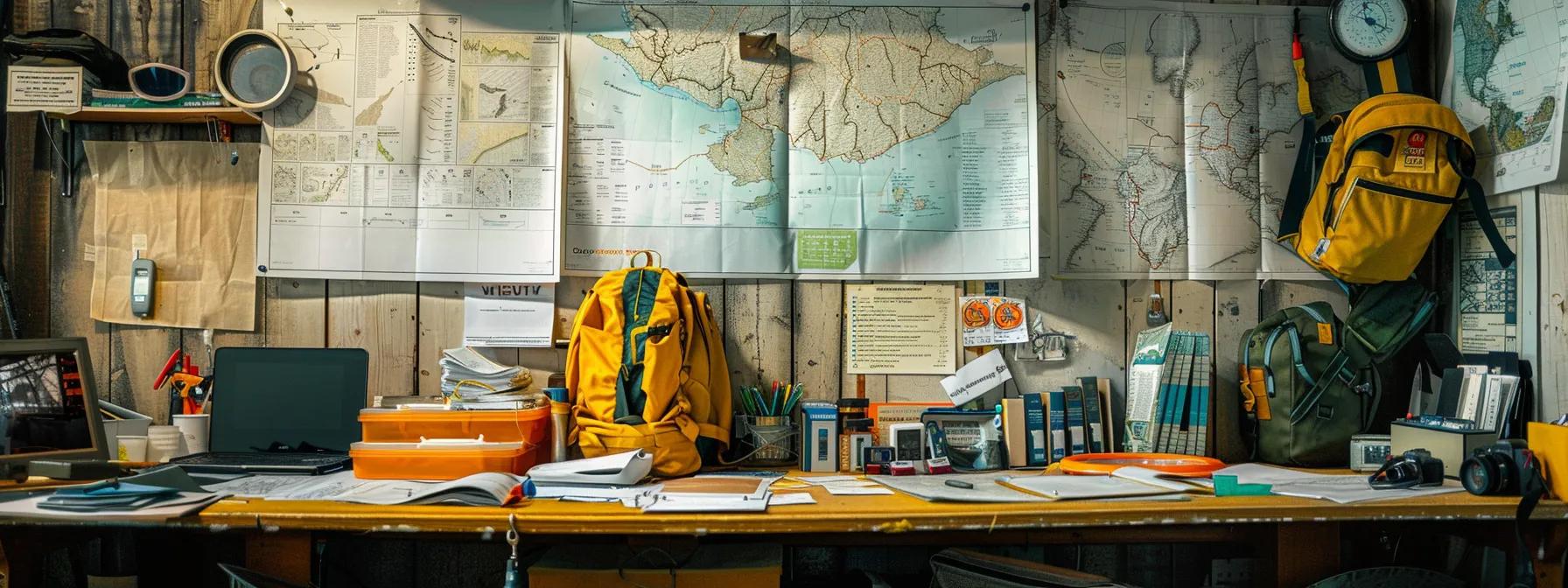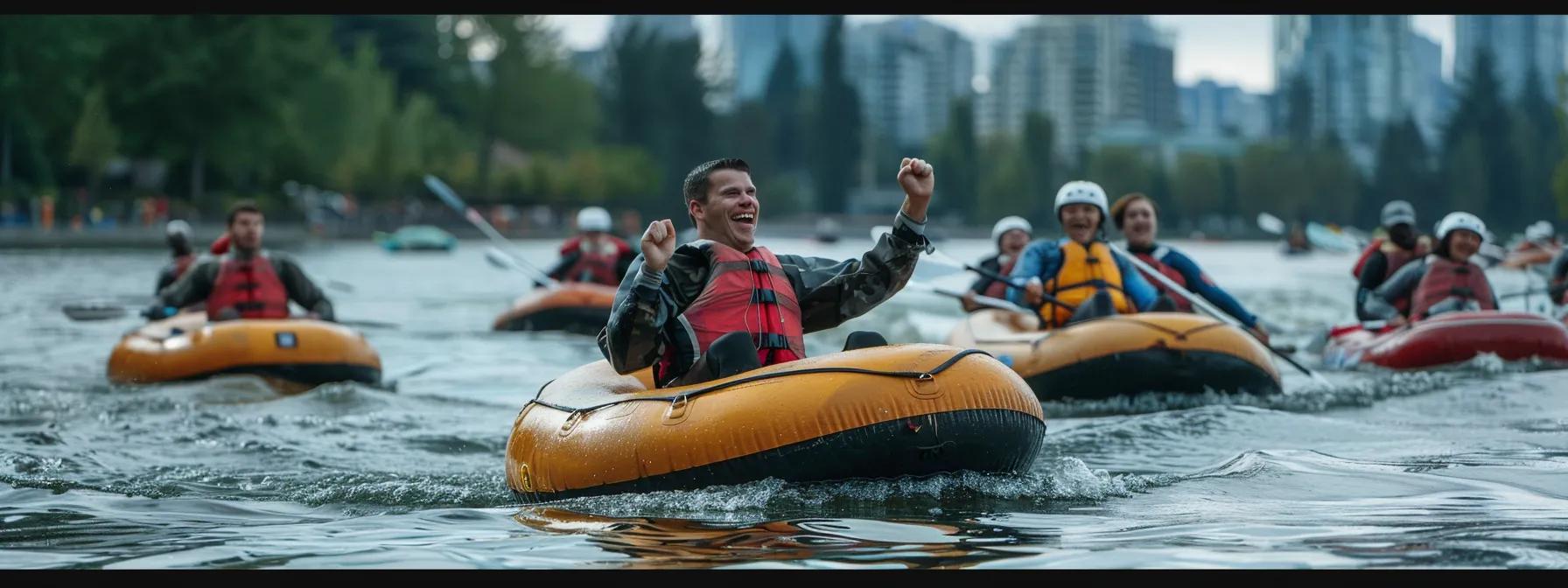Must-Know Safety Tips for River Hazard Protection
River tubing and whitewater rafting offer exhilarating opportunities to connect with nature and challenge yourself on dynamic waterways. However, these adventures come with inherent hazards that demand proper preparation and a strong respect for the natural environment. Essential safety practices include identifying common river dangers, preparing thoroughly before each trip, and using the right safety equipment. Mastering effective tubing and rescue techniques, understanding how to respond in emergencies, and adapting to varying water conditions are all vital skills. With guidance drawn from years of whitewater expedition experience, these strategies help reduce risks associated with strong currents, submerged obstacles, strainers, and cold-water exposure—ensuring that the excitement of the river remains both safe and rewarding.
What Are the Most Common River Hazards to Watch For?
Before embarking on a river tubing adventure, it is vital to understand the hazards present in natural waterways. Common hazards include fast-moving currents, strainers (fallen trees, branches, or thick vegetation), submerged objects (rocks, logs, or debris), cold water dangers that can lead to hypothermia, and sudden changes in water levels. These hazards can significantly increase the risk of accidents if not managed with careful planning and proper safety measures.
How Do River Rapids Affect Tubing Safety?
River rapids are turbulent, fast-moving sections of water that can capsize tubes, disorient paddlers, and sweep people away. They require constant vigilance and the correct positioning within the tube. Many experts recommend having a dedicated guide who understands the water flow and can direct safe tubing techniques such as angling into the current. Preparedness is key because rapids are a frequent cause of injuries.
What Are Strainers and Why Are They Dangerous?
Strainers are natural obstacles that allow water to pass through but can trap limbs. Debris like fallen trees and branches may create hidden barriers that can easily catch heads, arms, or legs. Since water currents continue to exert force on anyone caught in a strainer, there is a high risk of drowning. Constant awareness of the riverbank is essential for avoiding these dangerous spots.
How Do Submerged Objects Pose Risks in Rivers?
Submerged objects such as rocks, logs, and man-made debris may be hidden in murky or fast-moving water. If a tube or raft collides with an unseen object, severe injuries to the head, neck, or limbs can occur. Experienced guides often use personal experience or simple sonar techniques to pinpoint these hazards and advise on safe routes.
Why Is Cold Water a Serious Hazard?
Cold water can be a silent killer because even in mild climates, river water temperatures can drop significantly. Prolonged exposure can lead to hypothermia—a condition that impairs cognitive and motor skills and increases the risk of drowning. Wearing wetsuits or drysuits and having a rapid rewarming plan are essential precautions when dealing with cold water.
How Do Changing Water Levels Impact River Safety?
River levels can change rapidly due to rainfall, snowmelt, or dam releases. A calm river can quickly become a dangerous torrent with swift currents and submerged hazards. Monitoring weather forecasts and river condition reports is crucial. When water levels are high, a pre-trip safety assessment ensures that everyone is aware of the additional risks and is ready to adapt plans accordingly.
How Can You Prepare Before Your River Tubing Trip?

Preparation is the cornerstone of safety on the water. A careful planning process involves evaluating the river’s conditions, creating a comprehensive safety checklist, and selecting a river that matches your skill level. Thorough preparation enables quick responses to unexpected hazards and minimizes the risk of emergencies.
What Should You Include in a River Safety Checklist?
A robust river safety checklist should cover personal items, safety gear, emergency contacts, and environmental assessments. Essential items include:
- First-aid kit
- Life vests and helmets
- Waterproof communication devices
- Extra clothing and thermal protection
- Navigation tools and waterproof maps
Including a written plan for each group member ensures everyone understands their role in an emergency.
How Do Weather and Water Conditions Affect Your Trip?
Weather and water conditions directly impact safety. Colder weather can make water more dangerous, while heavy rains may lead to faster currents and higher water levels. It is best to avoid tubing on days with storms or high winds. Staying updated with local weather forecasts, water temperatures, and river flow rates helps in making informed decisions and necessary adjustments.
How Do You Choose the Right River for Safe Tubing?
The right river depends on the group’s expertise and desired tubing experience. Beginners should opt for calm, slow-moving waters with few rapids, while more experienced tubers might choose rivers with moderate rapids for a greater challenge. Researching online reviews, consulting local guides, and checking safety reports are effective ways to select a river that meets safety criteria and minimizes risk.
What Essential Safety Equipment Should You Pack?
Essential safety equipment is critical for preventing accidents:
- Personal flotation devices (PFDs) that are appropriately sized and certified
- Helmets for head protection
- Dry bags to protect electronics and documents
- Comprehensive first-aid kits with bandages, antiseptics, and pain relievers
- Waterproof radios or satellite phones for emergency communication
Carrying extra layers of clothing and thermal gear further reduces the risk from cold water exposure. Ensuring that all equipment is in proper working order before departure can save lives in unexpected conditions.
Which Safety Equipment Is Essential for Navigating River Hazards?
Relying on proper safety gear is a central aspect of safe river tubing, as it minimizes risks and offers critical support in emergencies.
How Do You Choose the Right Life Vest for River Tubing?
Choosing a life vest involves considering your body weight, the type of activity, and the vest’s buoyancy rating. A good life vest offers essential buoyancy, unrestricted movement, and features like adjustable straps and reflective strips for low-light visibility. The correct vest can be the difference between a quick recovery and a life-threatening situation in turbulent water.
Why Is Wearing a Helmet Important on the River?
Helmets serve as a critical defense against head injuries by protecting against impacts with submerged rocks, branches, and collisions with other tubes. Modern water sport helmets are lightweight yet durable with padding that absorbs shocks. Consistent helmet use is widely recognized by both professionals and recreational tubers as one of the best ways to prevent serious brain injuries.
What First-Aid Kit Essentials Should You Carry?
A tailored first-aid kit for river environments is indispensable. It should include:
- Adhesive bandages and gauze pads
- Antiseptic wipes and burn creams
- Tweezers, scissors, and a tourniquet
- CPR face shield and any personal medications
Water-resistant cases for the kit ensure quick access during an emergency.
How Do Dry Bags and Waterproof Gear Protect Your Belongings?
Dry bags and waterproof gear shield sensitive items—like smartphones, cameras, and maps—from water damage. Made from high-quality materials that repel moisture, these containers keep your essential navigation and communication devices operational during emergencies. This protection allows you to concentrate on safety without worrying about damaging personal belongings.
What Are the Best Techniques for Safe River Tubing and Navigation?

Utilizing proper techniques during river tubing not only enhances enjoyment but significantly reduces accident risks. Key techniques include maintaining proper position in the tube, effective use of paddles, and knowing how to react during a capsize.
What Basic Tubing Techniques Help Avoid Hazards?
Key tubing techniques involve:
- Sitting deep in the tube with legs securely positioned along the walls
- Distributing weight evenly to keep a low center of gravity
- Using paddles to steer clear of obstacles
Regular practice under certified instruction makes these techniques instinctive, preparing each participant for the dynamic conditions encountered on the river.
How Should You Respond to a Capsized Tube?
If a tube capsizes, immediate calm action is essential. Key steps include:
- Remaining calm and orienting yourself
- Signaling for help and coordinating with your group
- Swimming away from submerged obstacles once stabilized
Pre-established emergency signals and regular practice can build confidence and reduce panic when a capsize occurs.
What Are Effective River Rescue Techniques?
Effective rescue techniques include:
- Using ropes and throw bags to reach individuals in distress
- Coordinated team efforts to execute rescues efficiently
- Rehearsing rescue maneuvers during training sessions
Local guides usually include these methods in pre-trip briefings, ensuring everyone knows how to act swiftly in emergencies.
How Can Certified Guides Enhance Your Safety?
Certified guides bring invaluable expertise to river tubing trips. They are well-versed in local water conditions, emergency protocols, and rescue techniques. A guide can identify potential hazards and adjust plans accordingly. Their presence reassures the group, allowing adventurers to enjoy the experience while staying secure through efficient communication and on-site decision-making.
How Should You Handle Emergencies and Medical Issues on the River?
Effective emergency management during river adventures requires quick decision-making, immediate first aid, and knowing when to call for professional help. Emergencies may involve injuries, hypothermia, or even drowning, so maintaining a clear head and following a set protocol is crucial.
What Are the First Steps After a River Accident?
Immediately after an accident, ensure everyone is safe and accounted for. Assess the injured for signs of hypothermia, head injuries, or fractures without moving them unnecessarily. Signal for help using waterproof communication devices and secure a safe area away from fast currents. Staying calm and providing initial treatment while waiting for emergency services can be life-saving.
How Do You Recognize and Treat Hypothermia?
Hypothermia can be identified by uncontrollable shivering, slurred speech, poor coordination, and confusion. To treat it: – Remove wet clothing and wrap the victim in dry, warm blankets – Provide warm, non-alcoholic beverages – Gradually rewarm the person using body heat rather than direct heat
Continuous monitoring is necessary until professional medical care is available.
When and How Should You Call for Help on the River?
Call for help immediately if severe injury or dangerous conditions are evident. Use a waterproof radio or cell phone secured in a dry bag, or rely on pre-arranged signals if communications are limited. Knowing local emergency numbers and having a certified expedition company onboard can ensure swift rescue response.
What Are Basic First-Aid Procedures for River Injuries?
Basic first aid on the river includes: – Cleaning and dressing wounds promptly – Stabilizing fractures and preventing shock by keeping the victim warm and immobile – Using saline or clean water to rinse cuts and abrasions
Proper first-aid training for all participants helps manage injuries effectively until further medical help arrives.
What Are Expert Tips for Staying Safe While Tubing in Different River Conditions?

Tailoring safety practices to different river conditions is essential. Experts advise modifying gear usage, adjusting tubing techniques, and staying vigilant about risk factors, from alcohol consumption to environmental changes.
How Do You Adjust Safety Practices for Cold Water Rivers?
For cold rivers, wear additional thermal layers or insulated dry suits to retain body heat. Limit time in the water and monitor for hypothermia symptoms. Pre-trip planning should include checking water temperatures and practicing safety drills that simulate emergency rescues in cold conditions.
What Safety Measures Are Needed for Rapid-Filled Rivers?
In rapidly filled rivers, use extra protective gear such as helmets, life vests, and even knee or elbow pads. Certified guides should lead these trips with specialized tubing or rafting equipment designed for high-speed water conditions. Regular drills and clear, pre-arranged signals keep team members alert to sudden changes.
How Can You Avoid Alcohol and Other Risk Factors?
Avoid all alcohol and impairing substances before a tubing trip, as these can slow reaction times and impair judgment. Abstaining from such substances for at least 24 hours is advised. Also, avoid risky behavior like excessive swimming outside designated areas to maintain safety.
What Are Eco-Friendly Practices That Support Safe River Use?
Eco-friendly practices reinforce safety by preserving the natural environment. Follow a “leave no trace” approach, use biodegradable hygiene products, and participate in local river clean-ups. These practices help maintain water quality and wildlife habitats, indirectly reducing risks caused by environmental degradation.
Where Can You Find Reliable Resources and Training for River Safety?
High-quality training and reliable resources are crucial for safe river tubing. Trusted sources include certified safety workshops, product reviews from reputable outdoor brands, and guided tours by experienced operators. These resources build confidence and enhance personal safety practices.
What Are the Benefits of Attending River Safety Workshops?
River safety workshops offer hands-on training, updated knowledge of emergency protocols, and practice in simulated rescue techniques. They often provide certifications and recommendations for advanced gear, while also fostering a sense of community that emphasizes shared safety practices.
How Do You Select High-Quality Safety Equipment Brands?
Select safety equipment by considering certification standards, durability, user reviews, and expert ratings. Renowned brands undergo rigorous testing, ensuring that items such as life vests, helmets, and first-aid kits provide the necessary protection during river tubing adventures.
Where Can You Access Expert-Led Guided River Tours?
Expert-led tours are available through reputable local outfitting companies specializing in river sports. These tours, often provided by companies like Outland Expeditions, feature certified guides who offer comprehensive safety briefings, proper equipment, and meticulous emergency protocols.
What Online Resources Provide Up-to-Date River Safety Information?
Government websites, specialized outdoor forums, and academic research portals offer current updates on water conditions, hazard reports, and weather advisories. Additionally, safety blogs and YouTube channels hosted by experienced river users provide useful visual demonstrations of rescue techniques and safety practices.
Frequently Asked Questions
Q: What are the key dangers to watch for when tubing on a river?
A: The main dangers include fast-moving currents, strainers from debris, submerged rocks and objects, cold water hazards leading to hypothermia, and suddenly changing water levels. Recognizing these hazards early and using the appropriate gear and techniques can greatly reduce risk.
Q: How should I prepare for a river tubing trip if I have little experience?
A: Research the river’s conditions, review a safety checklist, and consult with certified guides. Prioritize equipment such as life vests and helmets, and consider attending a river safety workshop to learn proper techniques and rescue procedures.
Q: Can I rely solely on safety equipment to prevent accidents?
A: No single piece of equipment can guarantee complete protection. Quality safety gear, such as life vests and helmets, dramatically lowers risk, but proper training, thorough planning, and vigilance are equally important.
Q: What steps should be taken if someone in the group shows signs of hypothermia?
A: Move the person to a safe area immediately, remove wet clothing, and wrap them in dry, warm blankets. Provide warm drinks if possible and seek medical help urgently. Early intervention is critical.
Q: Where can I find reliable advice and reviews for river safety gear?
A: Trusted advice is available through online reviews on outdoor sports websites, recommendations from certified guides, and testing reports from regulatory bodies. Workshops and guided tours also offer valuable firsthand insights.
Q: What is the importance of having a dry bag during your trip?
A: Dry bags protect essential documents, maps, and electronics from water damage, ensuring access to vital information and maintaining contact during emergencies.
Q: How do I decide which river is best for my skill level?
A: Evaluate local river conditions through detailed reports, consult experienced guides, and consider your group’s expertise. Beginners should opt for calm waters, while more advanced tubers may choose rivers with moderate rapids.
Final Thoughts
Ensuring a safe river tubing experience relies on thorough preparation, proper equipment, and effective rescue techniques. Understanding hazards—from rapid currents and strainers to cold water risks—empowers adventurers to make informed decisions. Consistent training, adherence to safety checklists, and reliance on professional guides further secure your waterborne excursion. By following these measures, you can enjoy the thrilling beauty of river adventures while minimizing risks and protecting both life and the natural environment.




Leave a Reply
Want to join the discussion?Feel free to contribute!